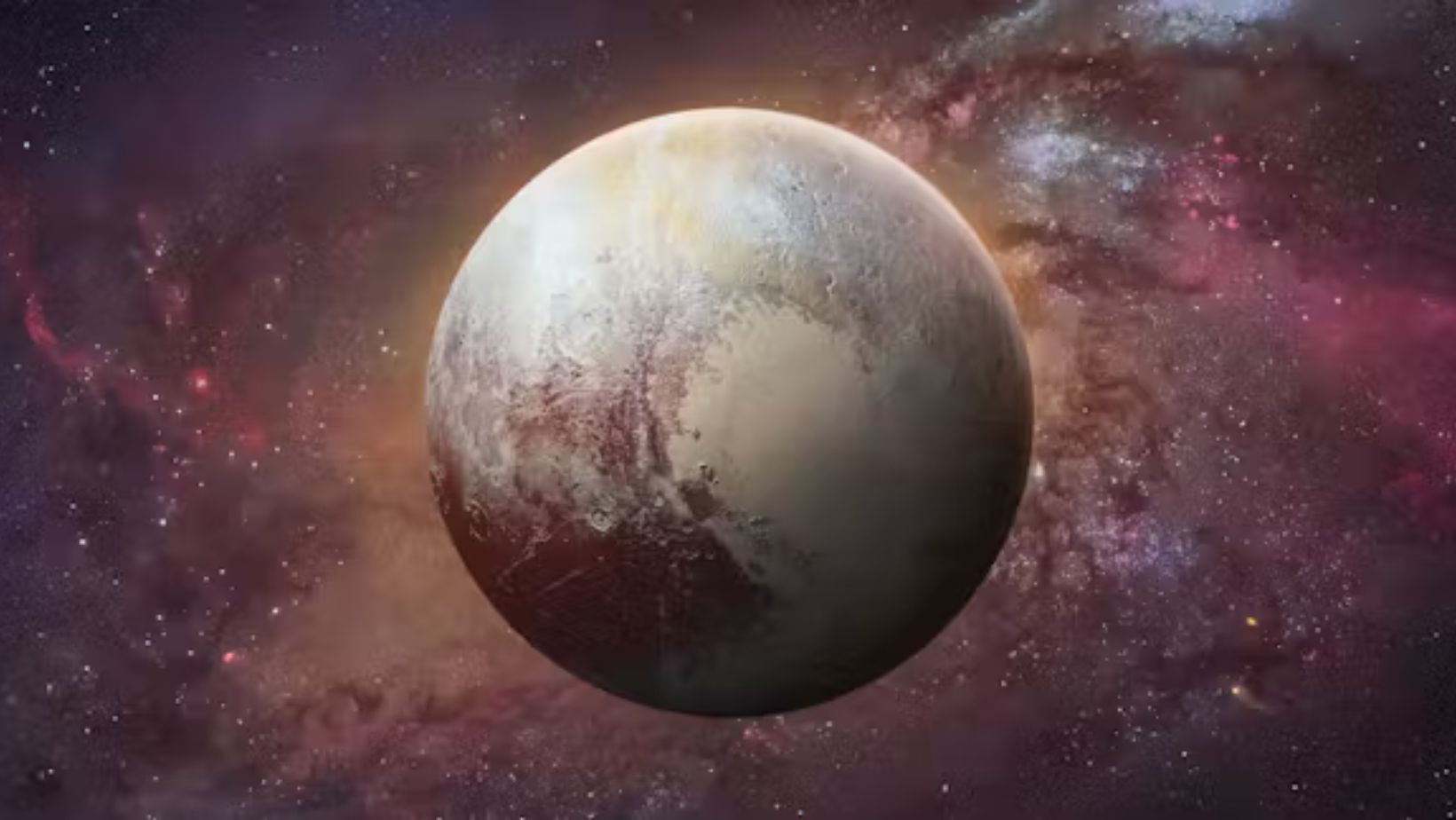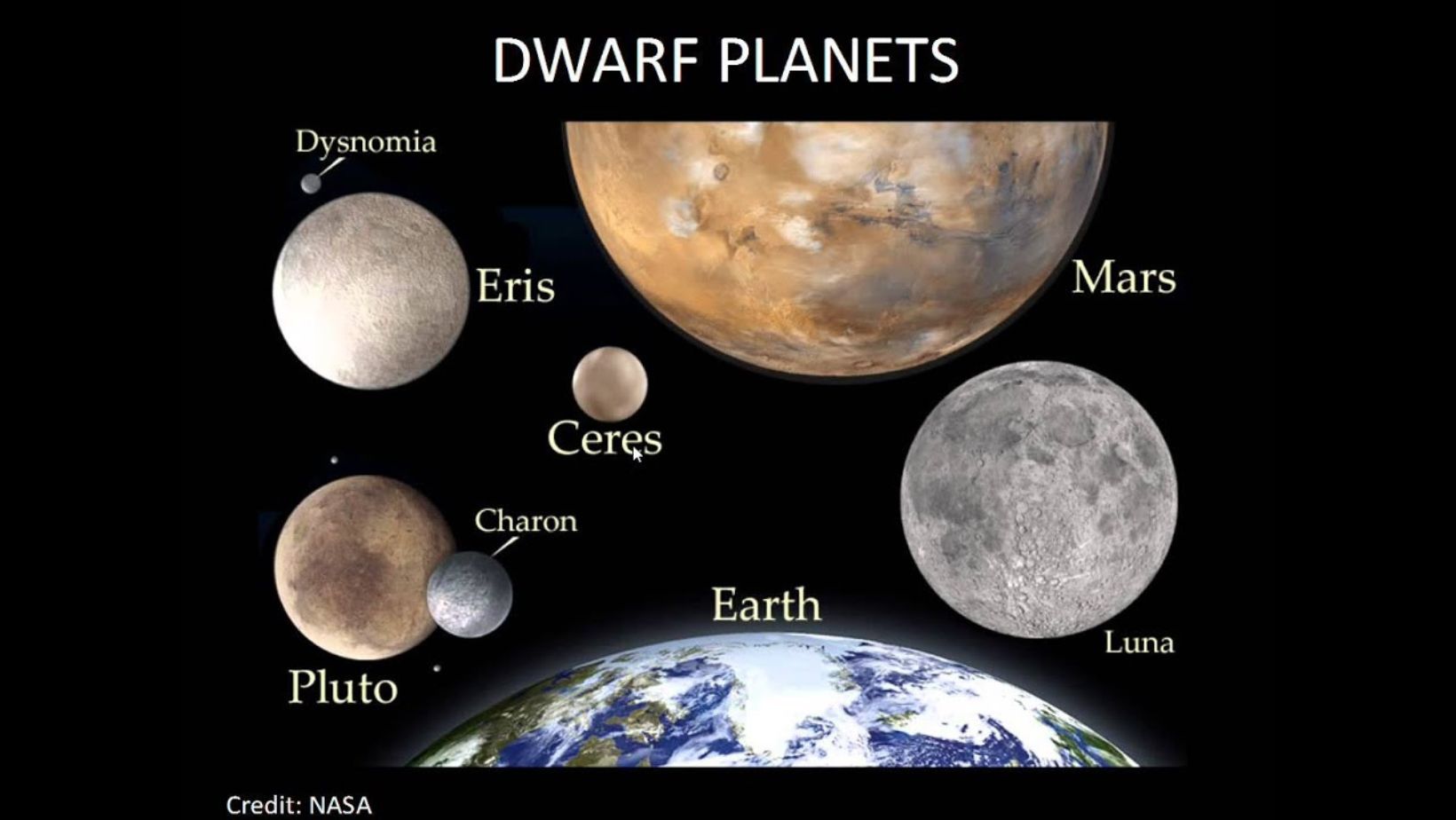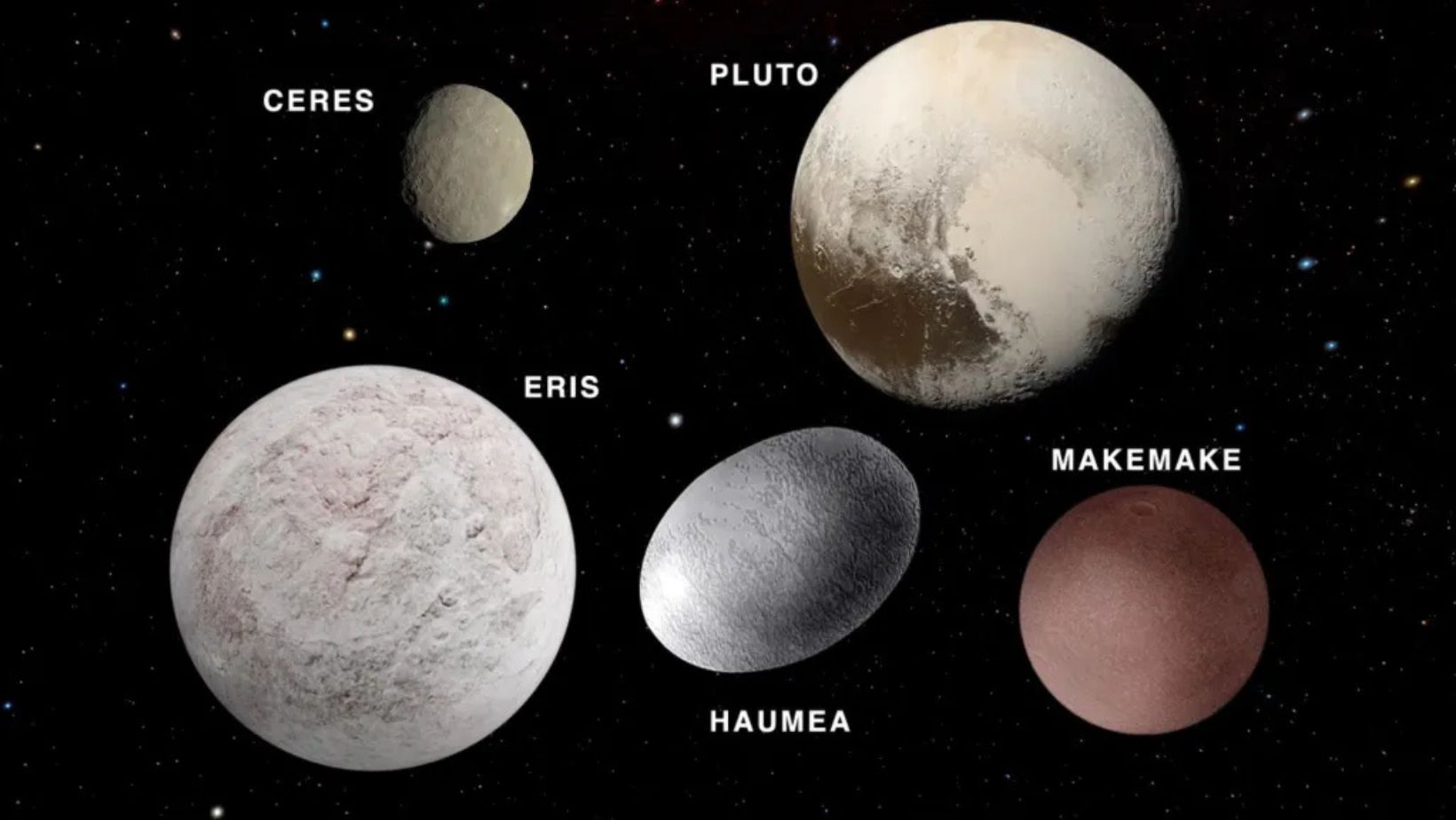Dwarf planets might not have the spotlight like regular planets, but they’re fascinating in their own right. So, what exactly defines a dwarf planet? These celestial bodies share similarities with planets but don’t meet all the criteria. To be a dwarf planet, an object must orbit the Sun, be spherical, and not have cleared its orbit of other debris. Among the most well-known are Pluto, Eris, and Ceres—each with its unique characteristics. Let’s dive into the world of dwarf planets and discover why they deserve our attention beyond their tiny size.
The Reclassification of Pluto: A Planet No More

Pluto was originally considered the ninth planet in our solar system after its discovery in 1930. For over 70 years, it held this title, even inspiring scientific curiosity and public fascination. However, in 2006, the International Astronomical Union (IAU) reclassified Pluto as a dwarf planet. This decision followed the realization that Pluto did not meet all the criteria to be considered a full-fledged planet.
According to the IAU, a planet must orbit the Sun, be spherical in shape, and have “cleared the neighborhood” around its orbit. While Pluto meets the first two conditions, it does not clear its orbit of other objects. Instead, it shares its orbital region with other objects in the Kuiper Belt, a zone filled with icy bodies beyond Neptune. This distinction led to Pluto’s reclassification, marking the end of its planetary status.
Pluto’s Orbit: A Unique Path in the Solar System
Pluto has a highly elliptical orbit, unlike most planets in the solar system. This means it is not a perfect circle, but rather an elongated shape, causing Pluto to move closer and farther from the Sun over time. Its orbit takes 248 Earth years to complete, making its journey around the Sun incredibly long. The distance between Pluto and the Sun varies greatly, from 4.4 billion miles at its farthest to 2.7 billion miles at its closest.
Interestingly, Pluto’s orbit overlaps with Neptune’s. Despite this overlap, the two bodies never collide. This is due to a unique orbital resonance, where Pluto and Neptune’s orbits are “locked” in a gravitational dance. For every three orbits Pluto makes, Neptune completes two, preventing them from coming too close to each other. This resonance ensures their paths remain safe and stable despite the overlap.
Eris: The Distant Rival to Pluto
Eris is a dwarf planet located in the outer reaches of our solar system. It was discovered in 2005 by astronomers at the Palomar Observatory. Eris is slightly smaller than Pluto, but it is still incredibly large for a dwarf planet. Its diameter is about 2,326 kilometers, making it one of the largest known objects beyond Neptune.
The discovery of Eris sparked a major debate in the astronomical community. Some believed it should be classified as a planet, while others argued that its characteristics made it more suited to the category of a dwarf planet. This controversy played a significant role in the redefinition of the term “planet” by the International Astronomical Union (IAU) in 2006. As a result, Pluto was demoted to a dwarf planet, and Eris was given the same classification.
Eris’s orbit is highly elliptical and takes about 557 Earth years to complete one revolution around the Sun. It is one of the most distant objects in the solar system, residing in the scattered disc, a region of icy bodies beyond Neptune. Despite its distance, Eris remains an important object of study for understanding the outer solar system.
Ceres: The Largest Object in the Asteroid Belt
Ceres was discovered in 1801 by Italian astronomer Giuseppe Piazzi. It is located in the asteroid belt, situated between Mars and Jupiter. Ceres was initially thought to be a planet, but later reclassified as a dwarf planet due to its small size and irregular orbit. Its position in the asteroid belt makes it a key object for studying the early solar system.
Ceres is the largest object in the asteroid belt, measuring about 590 miles (940 kilometers) in diameter. While it is much smaller than the planets, it is still significantly larger than most asteroids. Its composition is a mixture of rock and water ice, with evidence suggesting it may have an internal ocean. This distinguishes Ceres from other objects in the asteroid belt, which are typically composed mostly of rock or metal.
Compared to other dwarf planets, such as Pluto and Eris, Ceres is smaller in size. However, it is the only dwarf planet located in the inner solar system. Despite its size, Ceres holds many mysteries, including the possibility of subsurface water and even signs of past volcanic activity. Its unique features make it an exciting target for scientific exploration.
What Sets Dwarf Planets Apart from Regular Planets?
Dwarf planets are distinct from regular planets based on specific criteria defined by the International Astronomical Union (IAU). According to the IAU, a dwarf planet must orbit the Sun, have sufficient mass to form a nearly round shape, but not have cleared its orbit of other debris. This last characteristic sets dwarf planets apart, as regular planets have cleared their orbits of most other objects.
The main difference between planets and dwarf planets lies in their orbital zones. Planets, like Earth and Jupiter, have a dominant position in their orbits, while dwarf planets share their orbits with other objects. For example, Pluto, a well-known dwarf planet, resides in the Kuiper Belt, a region filled with other icy bodies.
Another key difference is size. Dwarf planets are generally smaller than the eight recognized planets. While planets like Earth and Neptune are significantly larger and have more gravitational influence, dwarf planets lack this dominance over their surroundings. These distinctions highlight the nuanced classification between these celestial bodies.
The Composition of Dwarf Planets: Ice, Rock, and More

Dwarf planets like Pluto, Eris, and Ceres are made up of a combination of ice, rock, and other materials. These celestial bodies, located beyond Neptune, have surfaces that reflect their unique compositions. Pluto, for example, contains a mix of frozen nitrogen, methane, and water ice, along with a rocky core. Eris, on the other hand, has a surface primarily made of methane ice and rock, showing similarities to Pluto but also unique features.
Ceres, the largest object in the asteroid belt, is composed of a significant amount of water ice and rocky material. It’s believed to have an icy crust over a potentially salty, liquid interior. Ice plays a key role in shaping the surfaces of these dwarf planets, creating smooth terrains or distinct features like nitrogen glaciers on Pluto. Rock, on the other hand, provides the density and structure that allows these bodies to remain intact and maintain their orbits.
The interplay between rock and ice contributes to the fascinating diversity of dwarf planets. Over time, these materials have influenced the geological processes, such as cryovolcanism and erosion. Understanding the composition of dwarf planets gives scientists insight into their history and the conditions of the early solar system.
Surface Features: Exploring the Terrain of the Dwarf Planets
Dwarf planets offer fascinating and diverse terrains that reveal much about the outer solar system. Pluto, the most famous dwarf planet, has icy mountains and vast plains covered in nitrogen ice. Its largest known mountain range, the Tenzing Montes, stands over 3,500 meters high. The smooth nitrogen ice plains, like Sputnik Planitia, hint at active geological processes.
Eris, known for its dark and reddish appearance, shows a much more hostile landscape. Its surface is largely covered by a layer of methane ice, with no significant surface features like mountains or valleys. The dark coloring of Eris suggests it may have been exposed to intense radiation over time. Despite its harsh appearance, some scientists believe there could be internal processes shaping its surface.
Ceres, the largest object in the asteroid belt, has a surface marked by mysterious bright spots. These spots, found in the Occator Crater, are believed to be salt deposits left by subsurface briny water. Ceres also has signs of water ice near its poles and possibly an ancient subsurface ocean. Its varied features make it a target for future exploration to uncover its secrets.
The Atmospheres of Dwarf Planets: Thin but Fascinating
Dwarf planets, unlike Earth, have atmospheres that are incredibly thin and diverse in nature. Pluto, for example, has a tenuous atmosphere primarily made of nitrogen, with traces of methane and carbon monoxide. Its atmosphere undergoes seasonal changes, expanding when closer to the Sun and contracting when farther away. This phenomenon occurs due to Pluto’s elliptical orbit and the freezing and sublimation of gases.
Eris, another distant dwarf planet, lacks a significant atmosphere. It is too small and cold to hold onto an atmosphere, so any gases it may have quickly escape into space. Despite this, Eris has a thin layer of nitrogen ice on its surface, hinting at some minor atmospheric processes.
Ceres, the largest object in the asteroid belt, has a faint atmosphere composed mainly of water vapor. This vapor is thought to come from ice on its surface, sublimating when Ceres approaches the Sun. Though weak, Ceres’ potential for water vapor opens the door for further exploration of its icy composition. Each of these dwarf planets offers unique insights into the conditions and possibilities for atmospheres in our solar system’s outer reaches.
The Moons of Dwarf Planets: Pluto’s Complicated System
Pluto, once considered the ninth planet, has a complex system of moons. Its largest moon, Charon, is nearly half the size of Pluto, making it unique in the solar system. Charon’s gravitational influence is so strong that Pluto and Charon orbit a common point in space, not one orbiting the other. This binary relationship is rare and fascinating for astronomers.
Eris, another dwarf planet, has one moon named Dysnomia. Dysnomia’s orbit is highly eccentric, taking it on an elongated path around Eris. This strange orbit is tilted, unlike most moons in the solar system, which usually orbit in the same plane as their planet. The unique nature of Dysnomia’s orbit helps scientists understand more about the forces in the distant reaches of the solar system.
Ceres, the largest object in the asteroid belt, has no known moons. Despite its significant size, it has not captured any satellites like Pluto or Eris. This lack of moons makes Ceres stand out in comparison to other dwarf planets. It remains one of the few large objects in the solar system without any natural satellites.
Future Exploration: What We’ve Learned and What’s Next
NASA’s New Horizons mission brought the world its first close-up images of Pluto, revealing a complex and active surface with icy plains and mountains. This mission taught scientists about Pluto’s geology and atmosphere, reshaping our understanding of this distant dwarf planet. After passing Pluto, New Horizons continued into the Kuiper Belt, sending back valuable data on other small, icy bodies. These findings have deepened our knowledge of the solar system’s outer regions.
The Dawn mission focused on exploring Ceres, the largest object in the asteroid belt between Mars and Jupiter. Dawn discovered that Ceres has a mix of rocky and icy materials, with mysterious bright spots likely made of salt deposits. This evidence hints at possible ancient water activity, suggesting Ceres could once have harbored conditions for life. Dawn’s success demonstrated how much can be learned about dwarf planets and other small bodies.
Looking ahead, future missions to distant objects like Eris, a distant dwarf planet, could reveal even more secrets of our solar system’s origins. Eris, slightly smaller than Pluto, is one of the most massive objects in the Kuiper Belt and remains largely unexplored. A mission to Eris could provide groundbreaking insights into the formation and evolution of distant solar system bodies.
The Fascination with Dwarf Planets: Why They Matter

Dwarf planets capture our curiosity because they reveal much about the solar system’s origins. These small celestial bodies, including Pluto, Eris, and Ceres, contain clues about the early stages of planetary formation. Unlike the eight main planets, dwarf planets orbit in areas of the solar system where conditions are less stable. Their location and composition allow scientists to study materials largely unchanged since the solar system’s formation, giving a glimpse into its ancient past.
The scientific importance of studying dwarf planets lies in their unique features and unexplored mysteries. Dwarf planets may hold water, ice, and organic compounds that help scientists understand planetary evolution. Research into their surfaces, atmospheres, and orbits helps reveal how planets, moons, and other solar system objects interact. By examining dwarf planets, scientists gather data that refines theories about our solar system’s structure and behavior.
Dwarf planets offer insight into the early solar system by preserving ancient materials in their icy, remote orbits. Many formed billions of years ago and contain remnants from the solar system’s birth. Unlike larger planets, they lack the gravitational force to significantly alter or renew their surfaces. This makes dwarf planets valuable “time capsules,” capturing the state of matter from early solar system history.
Conclusion: Dwarf Planets
Dwarf planets like Pluto, Eris, Haumea, Makemake, and Ceres each hold unique characteristics that enrich our understanding of the solar system. Pluto’s icy surface and potential for a subsurface ocean intrigue scientists, while Eris’s extreme distance and size challenge traditional planetary boundaries. Haumea’s rapid rotation and unusual shape, Makemake’s methane-rich surface, and Ceres’s location within the asteroid belt highlight the diversity of these small worlds. As space exploration advances, dwarf planets continue to play an essential role in unraveling the mysteries of planetary formation, solar system dynamics, and the potential for life beyond Earth.
FAQs
Why was Pluto reclassified as a dwarf planet?
Pluto was reclassified as a dwarf planet in 2006 by the International Astronomical Union (IAU). The main reason was that Pluto did not “clear its neighborhood” of other objects in its orbit, a criterion for being classified as a planet. This means that Pluto shares its orbit with other objects in the Kuiper Belt, unlike planets which dominate their orbital paths.
How do dwarf planets differ from asteroids?
Dwarf planets are similar to asteroids in that they both orbit the Sun and are smaller than planets. However, dwarf planets have enough mass and gravity to shape themselves into a roughly spherical form, while most asteroids lack this round shape due to insufficient gravitational force. Additionally, dwarf planets are often found in specific regions, like the Kuiper Belt, while asteroids are mostly concentrated in the Asteroid Belt between Mars and Jupiter.
Are there moons orbiting around dwarf planets?
Yes, some dwarf planets have moons. Pluto, for instance, has five known moons, with Charon being the largest and often referred to as a “double dwarf planet” with Pluto due to their size relationship. Eris also has one known moon, Dysnomia. However, not all dwarf planets have moons; Ceres, the only dwarf planet in the asteroid belt, does not have any natural satellites.
Could any dwarf planet become a full-fledged planet in the future?
It’s unlikely under the current definitions. For a dwarf planet to be reclassified as a planet, it would need to “clear its orbit,” meaning it would need to dominate its path around the Sun by gravitationally clearing away other objects. Given the regions where dwarf planets are found, like the Kuiper Belt, this is challenging, as they coexist with many other similar-sized objects.
What is the significance of studying dwarf planets like Ceres, Eris, and Pluto?
Studying dwarf planets provides insights into the early solar system, as these objects have likely remained relatively unchanged over billions of years. They serve as a window into the processes that shaped the planets and can reveal information about planetary formation, the composition of early solar materials, and the presence of water and organic compounds, which are critical to understanding potential habitability.

